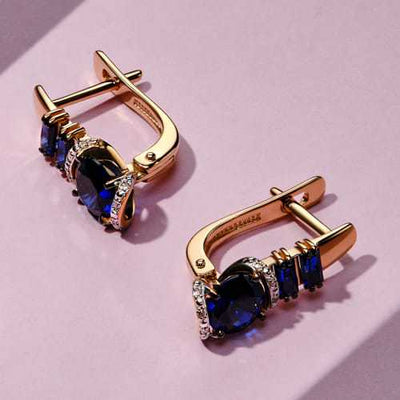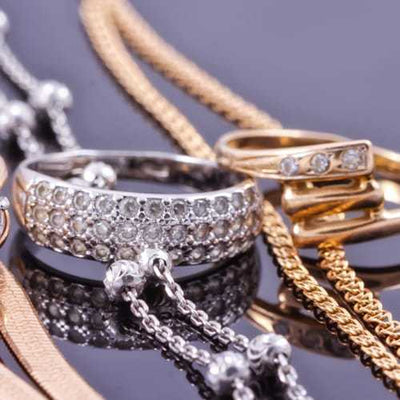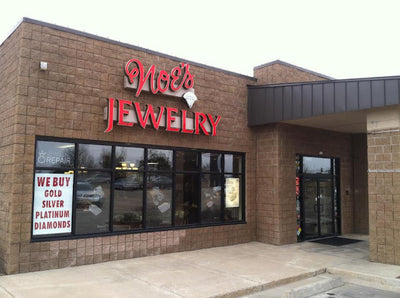What is an Amethyst?
Amethysts are the most valuable variety of quartz available. The name amethyst comes from the Greek word “amethystos,” which means “not drunk.” Until the 19th century, the amethyst was as expensive as the ruby or emerald. However, when large amethyst deposits were found in Brazil, the price of these gemstones dropped significantly.
As a variety of quartz, the thing that sets the amethyst apart from other varieties of quartz is the presence of iron or natural radiation exposure. This is how the stone gets its unique color. When heat treated, amethysts can turn into citrine or prasiolite, a green gem.
These gemstones are known as the birthstone for the month of February, and they are used as the gem for 6th and 17th wedding anniversaries.
Types of Amethyst
These gems can be found in many different parts of the world. Some of these regions produce amethysts with a distinct color style. For example, amethyst stones found in Uruguay tend to have a deep purplish-blue color. Arizona amethysts tend to look very similar to those found in Uruguay. However, amethysts found in Russia, which are also called Siberian amethysts, are deeply colored with red and blue tints. Siberian amethysts are rare, so they tend to be very expensive. African amethysts are known for their dark purple appearance.
Since amethysts are quartz, they can be mixed with other types of quartz to produce a unique stone. When amethyst mixes with milky quartz, which is also called clear quartz, it will be purple on top and either white or clear on the bottom. You might also find these stones, called amethyst quartz, with a banded purple and white appearance. These stones are generally turned into beads.
In nature, a mixture of purple amethyst and golden citrine can be found. These stones have been given the name ametrine. These stones can have an ombre appearance, and they can be pale or vividly colored. The only place that ametrine stones are produced in any significant quantities is the Anahí Mine in Bolivia that is located near the eastern border of Brazil.
Fortunately, the color of amethysts is very rare, which means that it is hard for other stones to be passed off as fakes. However, purple sapphire and purple spinel might be easily confused for amethysts, but they are very rare and tend to cost more than amethysts. The terms Bengal amethyst and Oriental amethyst actually refer to purple sapphires.
Iolite can also look similar, but it tends to look bluer than amethysts. Fluorite can also have a deep purple color, but it is soft, which limits its ability to pass as an amethyst.
Where Are Amethysts Found?
Like previously mentioned, amethysts can be found all over the world. Some common locations for amethyst mines include Uruguay, Russia, South Africa, Zambia, Madagascar, Ontario, Bolivia, Mexico, and parts of the United States, including Arizona, North Carolina, Maine, and Georgia. Brazil is the largest producer of amethysts, however.4 C’s for Amethyst
 Like diamonds, the value of amethysts can be determined by the four C’s. Let’s take a look at the characteristics that determine the value of these gemstones in order of importance.
Like diamonds, the value of amethysts can be determined by the four C’s. Let’s take a look at the characteristics that determine the value of these gemstones in order of importance.
Color
The finest amethysts will have a strong reddish purple to purple coloring with no visible color zoning. Dealers tend to prefer stones with reddish purple to dark purple coloring, but the amethyst still needs to be bright enough that it doesn’t look black in dim lighting.
An amethyst’s value decreases if there is any brownish or bronze-colored tinting in the stone. Color zoning will dramatically reduce the value of the stone as well. When an amethyst is too light, the value of the stone decreases.
Clarity
Most amethysts on the market are eye-clean, meaning that inclusions can’t be seen with the naked eye. African amethysts tend to have more inclusions than stones from Brazil. Fortunately, some African amethysts have such remarkable color that the inclusions aren’t as big of a deal. In fact, amethysts that have beautiful color but eye-visible inclusions are often cut as cabochons or beads.Cut
These stones can be cut into a variety of shapes using a variety of cutting styles. Facet patterns are common with amethysts, but mixed cuts and step cuts are also used. Amethysts often have uneven color distribution, which must be taken into account when cutting the stone to get the most value out of the gemstone.Carat
Amethysts are available in a variety of carat weights. Since the price per carat doesn’t increase dramatically with a larger carat weight stone, these are popular stones for the focal point of jewelry designs. These stones can also be used as small accent stones.Caring for Amethysts
These beautiful gems should only be cleaned with warm water and mild soap. You can use a soft cloth or toothbrush to clean the stone. It is also important to note that amethysts are only a seven on the Moh’s hardness scale, so harder gemstones can scratch an amethyst. This makes it important to carefully store any amethyst jewelry.
Check out the other stones in our Gemstone Series Guides:





